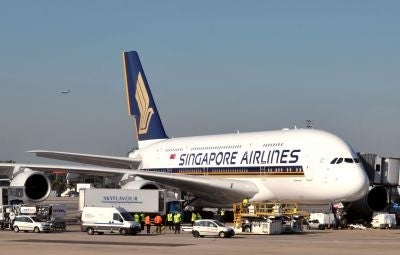Your support helps us to tell the story
From reproductive rights to climate change to Big Tech, The Independent is on the ground when the story is developing. Whether it's investigating the financials of Elon Musk's pro-Trump PAC or producing our latest documentary, 'The A Word', which shines a light on the American women fighting for reproductive rights, we know how important it is to parse out the facts from the messaging.
At such a critical moment in US history, we need reporters on the ground. Your donation allows us to keep sending journalists to speak to both sides of the story.
The Independent is trusted by Americans across the entire political spectrum. And unlike many other quality news outlets, we choose not to lock Americans out of our reporting and analysis with paywalls. We believe quality journalism should be available to everyone, paid for by those who can afford it.
Your support makes all the difference.Asia-Pacific airlines are raising ticket prices as travellers return in their droves after holding back on their travel plans last year because of the global recession.
A strong economic rebound, led by China, has resulted in carriers filling more seats during the summer holidays and demand should remain robust despite slower expansion in the second half of this year, industry analysts said.
Singapore Airlines (SIA) said it will raise fares on certain routes from October 1, while Korean Air bumped up ticket prices for international passengers by up to 10 percent in August, its second increase since June.
"Air fares are generally a function of market demand and supply and they are adjusted depending on market conditions," an SIA spokesman told AFP.
"Actual changes in fares also vary from route to route, and a range of fares is offered in different booking classes."
While the carrier did not give details of the increases, the local Straits Times newspaper said SIA raised fares by as much as 148 US dollars for an economy seat and 742 dollars for a premium ticket.
More than one million travellers visited Singapore in July, crossing the seven-figure mark for the first time ever in a single month, thanks in part to the lure of two new casino resorts in the city-state.
Australian flag-carrier Qantas increased its international and domestic fares on July 28 by three percent.
"Pricing is reviewed continuously across all routes, taking into account demand and capacity, competitor activity and business performance," Qantas said in announcing the price hike.
Hong Kong-based Cathay Pacific and its subsidiary Dragonair posted July passenger traffic figures that were 19.5 percent higher than in 2009 with the pair carrying 2.48 million passengers combined.
But a Cathay spokeswoman declined to comment on whether the carriers had jacked up prices.
"We won't comment on fares - they differ by market. But (the price) is based on supply and demand," she told AFP in Hong Kong.
The International Air Transport Association (IATA) said in its latest report that it expected global passenger traffic to expand by 7.1 percent this year despite a projected easing of the economic rebound in the second half.
While average airline fares are rising, they are still below levels reached before the US-triggered global economic meltdown that struck in the third quarter of 2008, the global airline trade body said.
The global recession lasted well into 2009 and IATA estimates that the world's civil aviation industry lost 9.4 billion dollars that year.
"Average one-way economy fares are 15 percent higher compared to the 2009 low, but still five percent below the early 2008 peaks," IATA spokesman Albert Tjoeng told AFP.
Premium airline fares are 10 percent above 2009 lows but still 20 percent below the pre-recession peaks, he added.
Regional airlines carried a record 17.2 million international passengers in July, up 20.4 percent from the same month last year, according to the latest data from the Association of Asia Pacific Airlines (AAPA).
In the first seven months of the year, the carriers carried 15.6 percent more passengers over the same period last year, it said.
This reflected "growing consumer confidence across the Asia-Pacific region", said AAPA director-general Andrew Herdman.
"Commercial activity has also picked up strongly, leading to a rebound in premium passenger traffic on both regional and long-haul routes," he said in a recent press statement.
IATA chief Giovanni Bisignani has cautioned however that the airline industry's recovery will be affected by the forecast slowdown in global economic growth in the second half of 2010.
AAPA's Herdman said airlines were still cautious about expanding seat capacity and adding routes.
"Asian airlines are still focussed on careful management of capacity, tight cost controls and ongoing efforts to achieve further productivity improvements as the industry strives to restore profitability after two years of heavy losses," he said.
burs-mba/rc/pst

Join our commenting forum
Join thought-provoking conversations, follow other Independent readers and see their replies
Comments